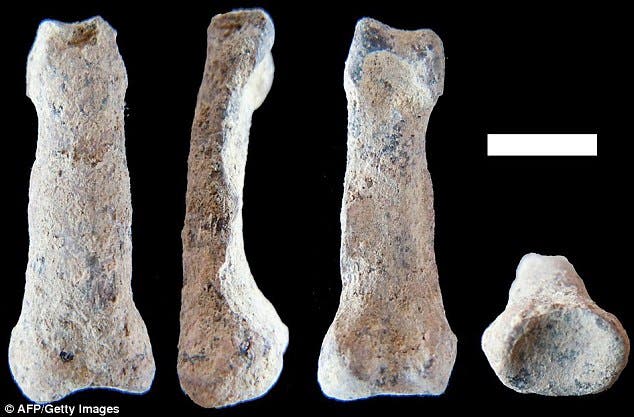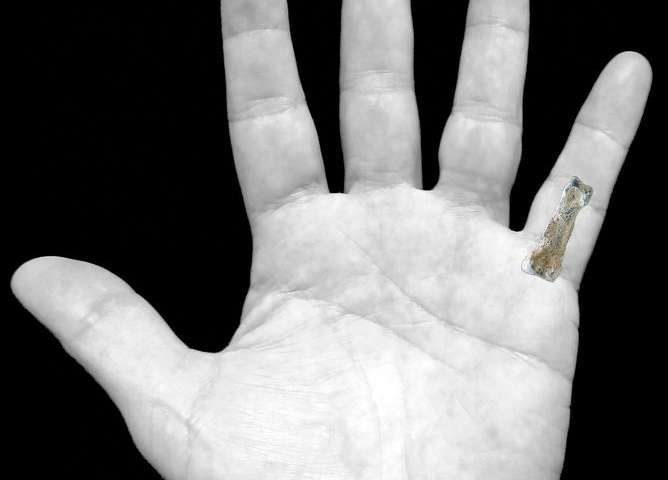Anthropologists have discovered the oldest known fossil of a bone resembling that of humans; the 1.85 million year old bone is the oldest evidence of a ‘modern’ hand and suggests that ancient humans may have been much larger than previously thought.

A key feature that distinguishes humans from other species is the ability to create and use tools. But in order to be able to create and use the tools, you need not only a big brain, but also very able hands. It’s not just the opposable thumbs – the entire structure of the hand is remarkable.
“The hand is one of the most important anatomical features that defines humans,” said study lead author Manuel Domínguez-Rodrigo, a paleoanthropologist at Complutense University of Madrid. “Our hand evolved to allow us a variety of grips and enough gripping power to allow us the widest range of manipulation observed in any primate. It is this manipulation capability that interacted with our brains to develop our intelligence.”
Many mammals and other animals have grasping appendages similar in form to a hand such as paws, claws, and talons, but these are not scientifically considered to be grasping hands. The only true grasping appears in primates, and apes are sometimes considered to have 4 hands, because they can also grasp with their ‘feet’.
If the bone is proportional in size to human bones, then the possessor of this bone would have been 5 feet 9 inches (1.75 meters) – a remarkable size when you compare it to Homo habilis, a hominin that measured only 3 feet high. The fact that human ancestors were so large comes as a surprise, but then again, there’s also a chance that the finger/body ratio wasn’t the same for them as it is for us.

Some scientists have often proposed that our hands evolved in conjunction with our use of tools, but recent discoveries suggest that the history of human hands is much more complicated. Modern humans are the only living higher primates to have straight finger bones, while hominin fingers were more curved, because they spent a great portion of time in the trees.
In a study published Tuesday in Nature Communications, researchers report the finding of an old fossil which also indicates straight fingers, and this just makes things more complicated. The straightness and other features of this new bone suggest adaptations for life on the ground rather than in the trees. This fills an important gap, but also raises more questions.
“Our discovery fills a gap — we found out that such a modern-looking hand is at least 1.85 million years old,” Domínguez-Rodrigo said.
Unfortunately, before we find more fossils, those questions will likely remained unanswered.


